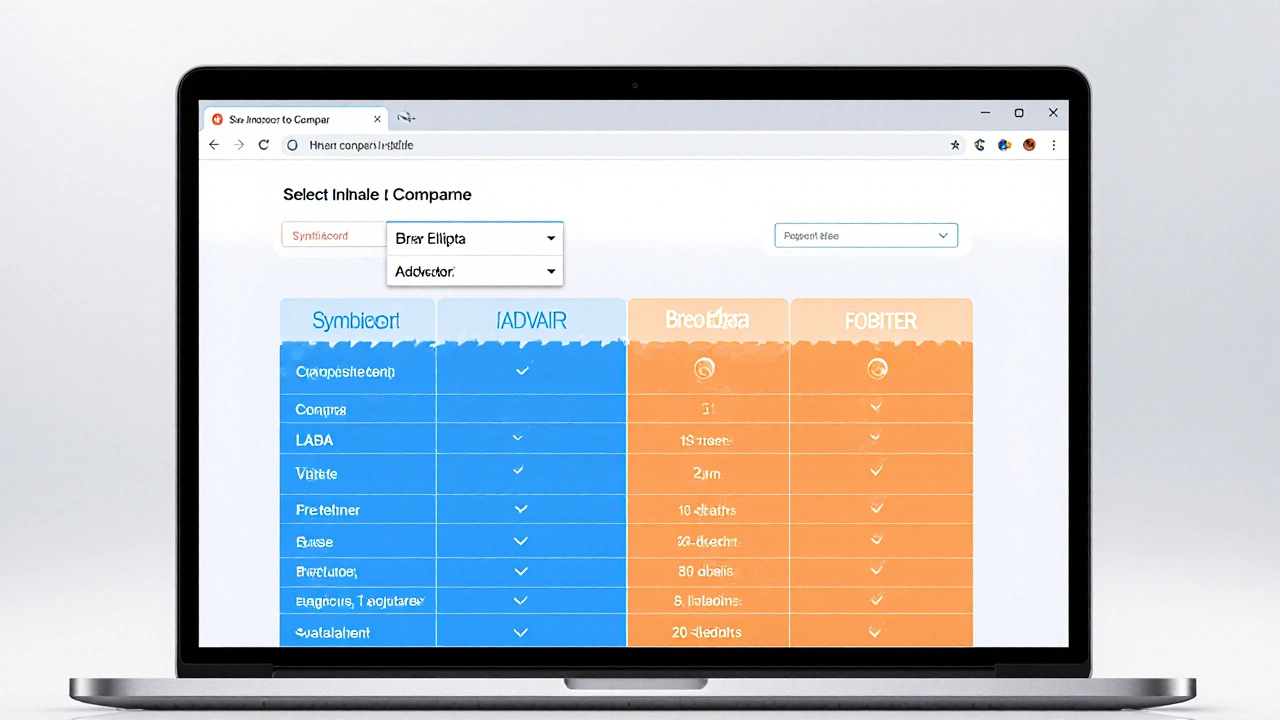Alternative Inhalers: How to Choose the Right Device for Your Breathing Needs
When talking about alternative inhalers, devices that deliver medication to the lungs besides the traditional metered‑dose inhaler. Also known as non‑MDI inhalers, they include dry‑powder inhalers, soft‑mist inhalers, and breath‑actuated devices. alternative inhalers give patients more options when standard inhalers cause irritation or are hard to use.
One common type is the Albuterol inhaler, a quick‑relief bronchodilator delivered via a pressurized canister or a breath‑activated system. It’s the go‑to for sudden wheeze, but many users switch to a dry‑powder version to avoid propellant fumes. Another popular choice is the Symbicort Turbuhaler, a combination of budesonide and formoterol in a dry‑powder format designed for daily control of asthma and COPD. Because it relies on the patient’s inhalation strength, it can be easier for kids or seniors who struggle with the timing of a traditional pMDI.
Choosing an alternative inhaler involves three main steps: first, identify the medication you need (bronchodilator, corticosteroid, or combo); second, match the drug to a delivery system that fits your breath pattern; third, consider portability and maintenance. For example, a dry‑powder inhaler (DPI), a device that releases powdered medication when you inhale sharply works best for people with strong inhalation flow. In contrast, a soft‑mist inhaler creates a fine aerosol without propellant, which can be gentler on the throat and reduce cough. Understanding how each device works helps you avoid common pitfalls. A device’s mechanism of action (pressurized spray vs. powder) influences the onset speed of relief. Propellant‑based inhalers deliver medication almost instantly, while DPIs may need a deeper, faster breath to release the dose. Another factor is patient technique. Studies show that up to 80% of inhaler users make a mistake with traditional MDIs, so an alternative that syncs with natural breathing can improve adherence. Device cost and availability also matter. Many insurance plans cover generic albuterol MDIs but limit reimbursement for newer DPIs or soft‑mist inhalers. Checking pharmacy pricing sheets, like those in our Buy Cheap Generic Albuterol Online guide, can save you up to 30% on a year’s supply. Finally, environmental impact is an emerging concern. Propellant inhalers use hydrofluoroalkane (HFA) gases that contribute to greenhouse emissions. Switching to a propellant‑free DPI reduces your carbon footprint without sacrificing efficacy. Below you’ll find a curated collection of posts that dive deeper into each of these options—comparisons, safety tips, buying guides, and real‑world feedback. Whether you’re looking for a budget‑friendly albuterol alternative, a reliable combo inhaler for long‑term control, or advice on navigating online pharmacies, the articles ahead cover the full spectrum of alternative inhalers and help you make an informed decision.Key Factors That Shape Your Inhaler Choice
Symbicort (Budesonide/Formoterol) vs. Top Inhaler Alternatives: A Detailed Comparison
A side‑by‑side look at Symbicort versus Advair, Breo Ellipta, Dulera and Fostair, covering dosing, efficacy, safety and how to pick the best inhaler for asthma or COPD.
Advair Diskus vs Other Asthma & COPD Inhalers: A Detailed Comparison
A comprehensive comparison of Advair Diskus with top asthma and COPD inhaler alternatives, covering effectiveness, device type, cost, side effects, and how to choose the right option.


